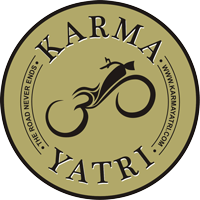Majuli lulls you, slows down your breath and stops you from speaking. It is a world in itself. An Island steeped in neo-Vaishnavite culture, it’s schools , mask makers,potters, fishing fields and more than anything, I found, an island of peace maybe not as an apparent sensation, but in the way Majuli envelops you;cutting you off from the mainland.
It used to have an area of 1250 sq kms but only 425 sq kms of that land is visible today , most of it lost to erosion by the Bhramaputra and the Lohit , joined in by the suabansiri from the north. I arrived on the Island by a small boat that could ferry a couple of bikes at a time. There is an option of taking the larger ferry from the further up the Subansiri but I decided to cut short and explore if there are other ferry points, turns out you have more than three ways to cross over into Majuli from the north.
Unsure of where I was going to stay that night I checked my map for markings I had made earlier. I was on the lookout for a paticular homestay and not being able to speak a word of Assamese I got lost in translation with hand gestures and ‘sounds like words’ – getting shrugged shoulders and ‘further down’ directions on the road I entered the Island with.
I stumbled upon the place finally, and it did not disappoint. At budget prices and really friendly staff , the huts and cottages are made in the traditoinal mishinng method of construction.
A nice meal followed with some lal chai , and my host gave me a copy of a map of the island. Tomorrow I planned to visit Majuli’s satras
The mask Makers of Majuli
The next morning , I took the map that was given to me and put down a list of places I was going to visit. First on the list was the mask making Satra of Samaguri.
The Sattra is a religious and cultural institution which is concerned with the dissemination of the principles and devotional practices of Neo-Vaishnavism – a religious movement which has had a strong impact on the religious and socio cultural life of people of Assam since the 15th century*. At Samaguri I met a family of three brothers who trained by their father in the art of mask masking, a family craft passed down with each generation. Their masks are extensively used in the annual Raas Leela on Majuli. It involves performances of dance and worship used to depict various instances from the life of Lord Krishna. The masks are made from bamboo , cement , cardboard and cowdung , each item playing its part in the silent and patient skill of the mask maker , to produce some truly terrifying and eerie characters for the festival.
My next stop was the Kamalabari Satra that is known best for it heritage of dance. I got into conversation with Baburam Sickeda who described life at his Satra. Several families living together make up the institution and each unit is comprised of four or more males. The younger members are adopted by Satra and taken care of by the elder members and so on. Training for each family member starts at a young age of 5 , first with instructions on dance and yoga and then later with education and the tenants of the Vasihnavite faith.
As darkness set in on my way home , I found myself lulled and calm , the Majic of Majuli is not lost on you if you are willing to experience it. After a final dinner on the Island , I slept in my bamboo hut. and woke the next morning to catch a ferry across the mighty Brahmaputra. Heading back to the mainland of Assam.




